Living things inherit traits from their parents from birth. For us humans, we take after some of our parents’ traits – our eye colour, our skin colour, our height, and many other characteristics. Of course, some of them are determined based on the environment we grew up in, but most of these traits are already given to you from birth. However, humans are not alone in this world of microbiology – other living things, such as plants and animals, also inherit traits from their parents. Let us discuss what genetic materials are and what DNA and RNA are.
Nucleic Acids
You probably have heard of terms such as DNA and RNA, but what exactly are they?
Both DNA and RNA are known as nucleic acids and are responsible for containing genetic information in cells. As nucleic acids are large biomolecules, they have monomers known as nucleotides. Each nucleotide consists of a pentose sugar, an inorganic phosphate group, and a nitrogenous base.
So, what determines whether the nucleic acid is a DNA or an RNA molecule? That would depend on an oxygen atom at the 2′ carbon of the pentose sugar. Nucleotides without an oxygen atom bonded to the 2′ carbon of the pentose sugar are known as deoxyribose, and those with an oxygen atom are known as ribose.
Nucleotides are formed in a condensation reaction. The nitrogenous base is joined to the 1′ carbon via a glycosidic bond to form a nucleoside. The nucleoside then forms a phosphoester bond with the phosphate group to form a nucleotide.
Two nucleotides join to form a dinucleotide via a condensation reaction. A phosphodiester bond is formed when one nucleotide’s phosphate group is attached to the 3′ carbon of the other nucleotide. Polynucleotides are formed when dinucleotides are joined together repeatedly via condensation reactions.
DNA
Earlier, we mentioned that DNA is nucleic acids consisting of deoxyribose instead of ribose, giving rise to its name, deoxyribonucleic acid. So, what exactly is DNA, and how does it store genetic information?
DNA molecules consist of two polynucleotide strands that are twisted around each other to form a double-stranded, double-helical structure. The two strands are held together by hydrogen bonds between nitrogenous bases of the two strands to form base pairs. Complementary base pairing happens when adenine forms two hydrogen bonds with thymine or when guanine forms three hydrogen bonds with cytosine.
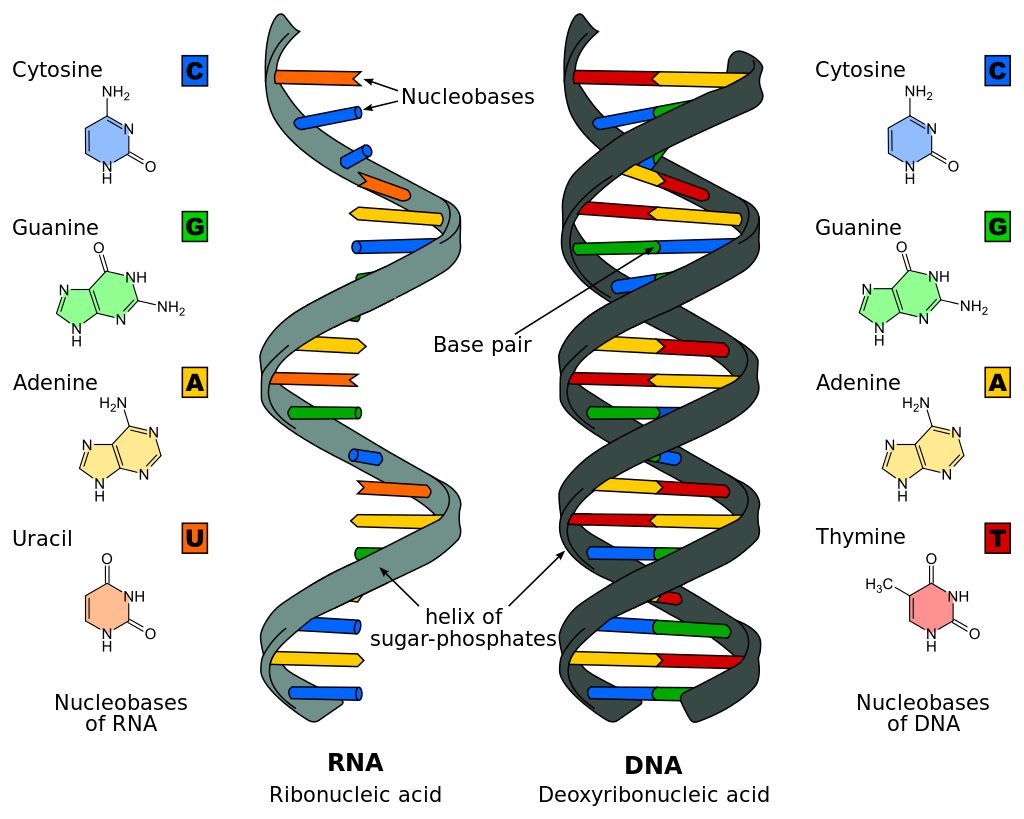
Now that we have discussed complementary base pairing, maybe we should talk about what it does exactly. As the linear sequence of bases makes up coded genetic information, the long DNA polymer can store large amounts of information with many base pairs. The large amounts of hydrogen bonds between base pairs also ensure its stability to minimise mutations. On that note of stability, many other features of DNA allow it to ensure its stability. This includes the strength of phosphodiester bonds between nucleotides, hydrophobic interactions between stacked bases, and the lack of hydroxyl groups (oxygen atoms) at the 2′ carbon of the pentose sugars of DNA nucleotides.
Being double-stranded, the DNA molecule can use the intact strand to replicate if one strand undergoes mutations. Mutations occur when there are changes in the sequence of bases.
DNA Replication
Initiation
DNA replicates semi-conservatively with two daughter molecules formed at the end of replication. Each daughter molecule contains one original parental DNA strand and one newly synthesised DNA strand.
DNA replication begins at the origin of replication, where helicase, an enzyme, is attached. Helicase breaks the hydrogen bonds between complementary base pairs, unwinding and separating the two DNA strands to form ssDNA. Single-stranded DNA binding proteins (SSB) then attach to ssDNA to stabilise them and keep them seperated. Each ssDNA acts as a template for the synthesis of each daughter strand.
A replication bubble forms when the two DNA strands separate, with replication forks at both ends of the bubble. In prokaryotes, there is only one replication bubble. However, in eukaryotes, there are many replication bubbles to increase the rate of replication. DNA replication then proceeds in both directions of the bubble.
Elongation
Primase catalyses the synthesis of RNA primers complementary to DNA nucleotides on the template strand. This allows DNA polymerase III to add DNA nucleotides to the pre-existing 3′ hydroxyl (OH) end provided by RNA primers. DNA polymerase III then adds DNA nucleotides to exposed bases on the template strand via complementary base pairing.
DNA polymerase III is crucial for DNA replication. On top of adding on DNA nucleotides, it also serves many purposes. DNA polymerase III catalyses the formation of phosphodiester bonds between adjacent nucleotides, elongating the new DNA strand. It is also capable of proofreading, correcting any incorrectly-paired nucleotides. However, it works only in the 5′ to 3′ direction with respect to the growing chain.
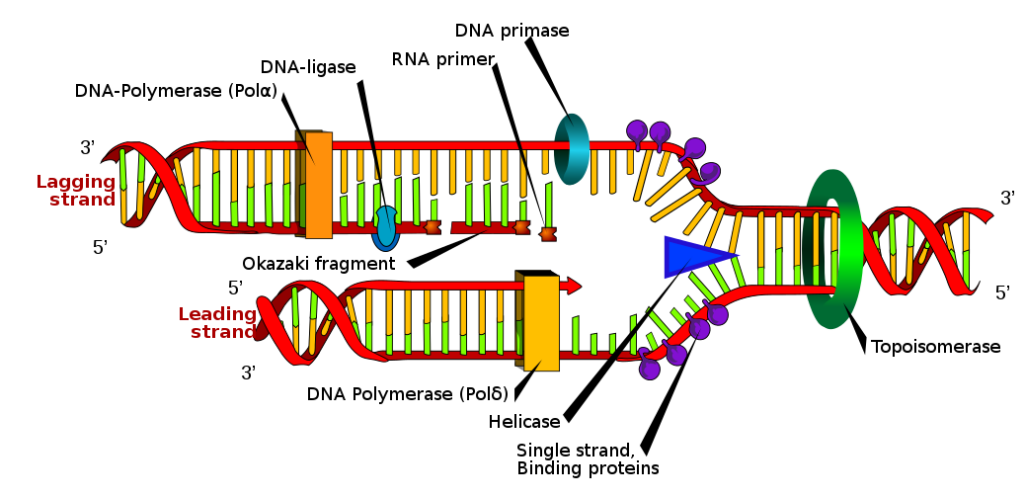
The leading strand elongates continuously in the 5′ to 3′ direction as DNA polymerase III moves along the template strand towards the replication fork. However, the lagging strand elongates discontinuously through the synthesis of Okazaki fragments since DNA is antiparallel, and DNA polymerase III can only add DNA nucleotides to free 3′ OH ends. Okazaki fragments are synthesised as DNA polymerase III moves away from the replication fork. However, the synthesis of the entire lagging strand moves towards the replication fork.
End of Replication
After synthesising both strands, I use DNA polymerase to replace the RNA primers at the start of each Okazaki fragment and lead strands with corresponding DNA nucleotides. DNA ligase then seals the gaps between both strands. Two daughter DNA molecules are formed, with each consisting of one parental and one daughter DNA strand.
In eukaryotes, the daughter strand formed will be shorter than the template strand, which is known as the end replication problem. End replication problem occurs when RNA primers at the 3′ end of the template are not replaced with corresponding DNA nucleotides. This is due to the lack of available 3′ OH ends for DNA polymerase III to add them. End replication problem only occurs in eukaryotes since eukaryotes have linear DNA.
RNA
We have certainly discussed DNA, but fret not; we have not neglected the RNA. Unlike DNA, the pentose sugar is ribose, and it has a slightly different nitrogenous base, uracil, instead of thymine. While DNA is double-stranded, RNA is usually single-stranded. However, RNA molecules may have self-looping regions due to complementary base pairing. Now, let us talk about some of the different RNAs.
Messenger RNA (mRNA) carries DNA information from the nucleus to ribosomes in the cell’s cytoplasm. Three consecutive mRNA bases form a codon coding for an amino acid. mRNA is usually temporary and is degraded after translation. This is most commonly heard as the key component to COVID-19 vaccines – mRNA is translated into a protein to trigger an immune response against the virus.
Ribosomal RNA (rRNA) are synthesised in the nucleolus and form a major part of ribosomes. Ribosomes are complexes that translate mRNA into proteins. Transfer RNA (tRNA) brings the appropriate amino acid to the ribosome to be synthesised into proteins. It usually folds upon itself due to complementary base pairing and contains a 3′ end with an amino acid binding site. There are about 45 different tRNAs, each specific to one amino acid.
Conclusion
Though DNA and RNA are vastly different, both in terms of their structures and their purposes, they play an important role in carrying genetic materials. DNA stores information, whereas the different RNA aims to synthesise proteins in cells. Both are equally important in the inheritance of traits in living things.

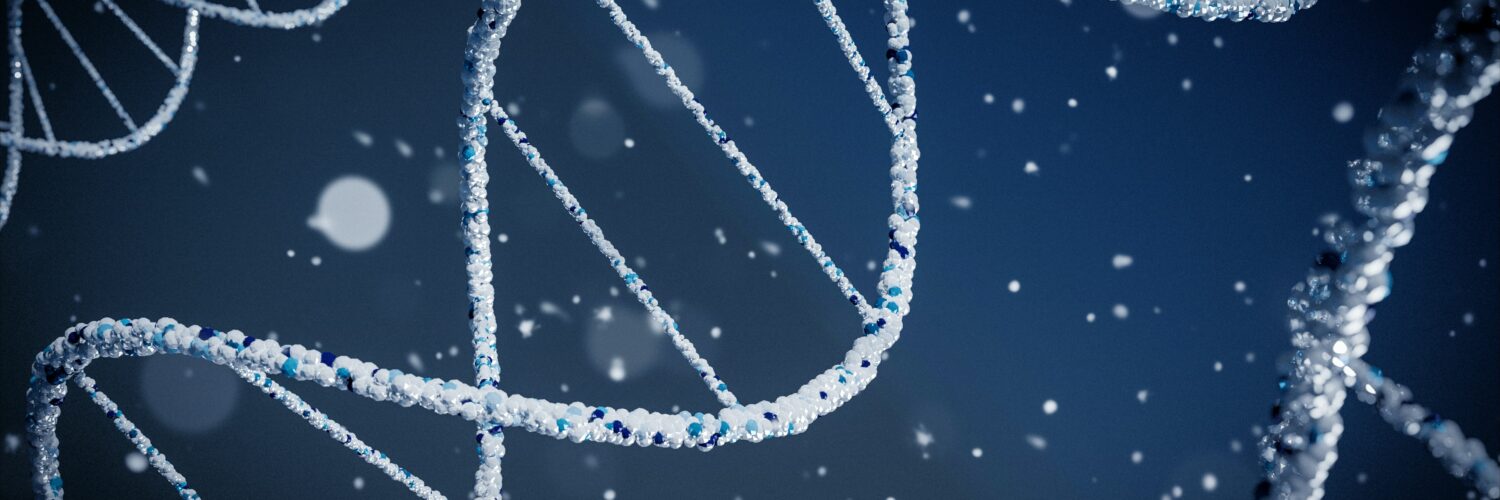

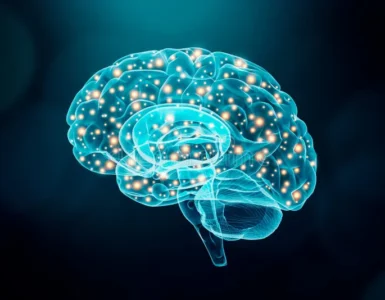
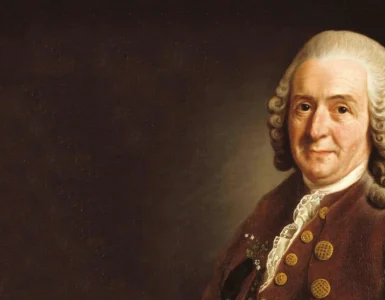
Add comment